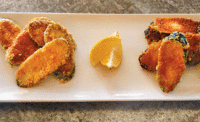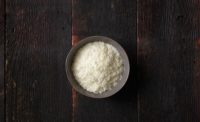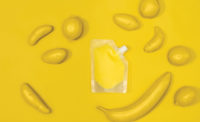Potatoes USA: Better Baking
Potatoes make baked goods even better




Potatoes—and the ingredients made from them—are increasingly used to help eliminate gluten in everything from binders and breadings to baked goods and more.
But in baking especially, gluten reduction barely scratches the surface of what flakes, flour and the whole family of functional potato ingredients can do. Truth be told, potato ingredients can help ease operations, improve product performance and make finished bakery items simply look and taste better.
Consider the case of breads made from yeast-leavened doughs. A common complaint among bakers is that tackiness in such doughs hinders production—slowing the mix, necessitating frequent starts and stops—and generally makes the dough harder to handle.
Dehydrated potato flakes added at levels ranging from 2% to 8% of the yeast-dough formulation absorb excess moisture, creating a dough that’s markedly less sticky, smoother, more pliable and easier to mix, form and portion.
Later in the process, that same moisture-binding capacity helps maintain a tender, moist crumb in the finished bread. By impeding moisture migration, potato flour, flakes and granules act as nature’s shelf-life extenders. In fact, the precooked amylopectin starch in potato ingredients may even crosslink with gluten proteins to retard starch crystallization and retrogradation—once again, putting the brakes on staling.
Potato ingredients are also natural dough conditioners, a quality that comes in handy when trying to scrub “chemical-sounding” dough conditioners from labels. Not only do they improve crumb structure and dough handling, their naturally occurring complement of minerals like potassium, magnesium and phosphorus stimulate yeast growth for a stronger, more complete fermentation. This improves volume and texture in the finished bread while also setting the stage for appealing flavor development.
And this is just an inventory of potatoes’ benefits in yeast-leavened breads! As it happens, potatoes bring many of the same functional qualities to quick breads like biscuits—where they enhance fluffiness—and flatbreads like tortillas—where they bind moisture, increase pliability, extend shelf life and ease production.
Quick and yeast-leavened breads both benefit from potato ingredients’ contribution to a crisp, evenly browned crust. Credit potatoes’ naturally occurring reducing sugars, which participate in the Maillard browning reactions that develop a sought-after golden crust color. The Maillard reaction also produces many of the flavors we’ve come to love in baked goods, too; and potatoes’ mildly sweet, slightly creamy background notes complement, rather than overpower, those classic baked-good notes.
And did somebody say dessert? Even sweet baked goods and pastries are better with potatoes. Mashed potatoes—yes, mashed potatoes—added to a chocolate cake batter at just more than 13% of the total formulation yield a smoother batter and contribute a delicate sweetness that make it hard not to want more—more potatoes, that is.
For more from Potatoes USA, visit PotatoGoodness.com/ingredient.
Looking for a reprint of this article?
From high-res PDFs to custom plaques, order your copy today!








